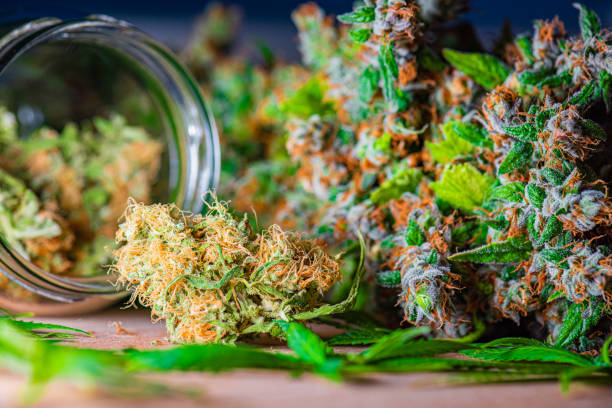Introduction
Cannabis cultivation has evolved from clandestine operations to a legitimate and burgeoning industry, with growers seeking the perfect blend of science and art to maximize yields and produce high-quality buds. The successful cultivation of cannabis involves a nuanced understanding of various scientific principles, from horticulture to biochemistry. In this article, we will delve into the intricacies of the science behind cubvh successful cannabis cultivation, exploring key factors that contribute to optimal growth, yield, and potency.
Genetics: The Foundation of Successful Cultivation
The journey to successful cannabis cultivation begins with selecting the right genetics. Cannabis plants exhibit an incredible diversity of characteristics, and choosing the appropriate strain is crucial for achieving desired outcomes. Genetic factors influence growth patterns, resistance to pests and diseases, cannabinoid content, and overall plant structure.
Modern breeding techniques have allowed cultivators to develop strains tailored to specific preferences and cultivation environments. Understanding the genetics of a chosen strain helps growers anticipate its needs, optimize environmental conditions, and enhance overall crop success.
Environmental Factors: The Goldilocks Zone
Creating the ideal environment for cannabis plants is a delicate balance that involves managing various factors, such as light, temperature, humidity, and airflow. Cannabis plants thrive in specific conditions commonly referred to as the “Goldilocks zone,” where everything is just right.
Light plays a pivotal role in cannabis cultivation, as it serves as the energy source for photosynthesis. Indoor cultivators often use artificial lighting, such as high-intensity discharge (HID) lamps or light-emitting diodes (LEDs), to mimic the sun’s spectrum. Outdoor cultivators, on the other hand, rely on natural sunlight. The duration of light exposure also influences the plant’s vegetative and flowering stages.
Temperature and humidity are critical environmental parameters that impact plant growth. Cannabis plants prefer temperatures between 70-85°F (21-29°C) during the day and slightly cooler temperatures at night. Maintaining proper humidity levels, typically between 40-60%, helps prevent mold and mildew while promoting healthy transpiration.
Airflow is essential for regulating temperature and humidity, preventing the buildup of stagnant air that can lead to pest infestations and diseases. Adequate ventilation also ensures a constant supply of carbon dioxide for photosynthesis.
Nutrient Management: Feeding the Green Giants

Cannabis plants require a balanced diet of macro and micronutrients to thrive. The primary macronutrients include nitrogen (N), phosphorus (P), and potassium (K), while essential micronutrients include iron, zinc, copper, and magnesium. Cultivators often use fertilizers tailored to the different stages of the plant’s life cycle – vegetative, flowering, and pre-harvest.
Soil composition is another crucial aspect of nutrient management. A well-aerated, nutrient-rich soil provides a stable medium for root development and nutrient absorption. Growers often amend soil with organic matter, such as compost or worm castings, to enhance its fertility.
Hydroponic systems, where plants grow in nutrient-rich water without soil, have gained popularity for their efficiency in nutrient delivery. These systems allow for precise control over nutrient concentrations, resulting in faster growth rates and potentially higher yields.
Watering Practices: Balancing Act
Proper watering is a balancing act that depends on factors such as plant size, growth stage, and environmental conditions. Cannabis plants prefer slightly acidic water with a pH range between 6.0 and 7.0. Watering frequency should be adjusted to prevent overwatering, which can lead to root rot, or underwatering, which can stress the plant.
Growers often employ irrigation systems, such as drip systems or soaker hoses, to deliver water directly to the plant’s root zone. This targeted approach conserves water and reduces the risk of fungal diseases associated with overhead watering.
Pruning and Training: Shaping the Canopy
Pruning and training techniques play a crucial role in shaping the cannabis canopy, optimizing light penetration, and maximizing yields. The removal of unnecessary foliage redirects energy towards bud development and improves airflow, reducing the risk of mold and pest infestations.
Low-stress training (LST) and high-stress training (HST) are common techniques used to manipulate plant structure. To generate an equal canopy, LST includes gently bending and tying down branches. HST, on the other hand, involves more aggressive methods, such as topping or fimming, to encourage the growth of multiple colas.
Harvest Timing: The Art of Patience
Knowing when to harvest is a critical aspect of successful cannabis cultivation. Harvest timing significantly influences the potency and flavor profile of the final product. The ideal time to harvest depends on the strain, and factors such as trichome color, pistil development, and overall plant maturity are considered.
Trichomes, the tiny resin glands on the buds, change color as the plant matures. Clear trichomes indicate an early stage, while cloudy trichomes suggest peak potency. Amber trichomes may signify the degradation of cannabinoids due to overripeness. Observing these changes under magnification helps growers determine the optimal harvest window.
Drying and Curing: Preserving Quality
The post-harvest phase is just as crucial as the cultivation process itself. Proper drying and curing preserve the quality, flavor, and potency of the harvested buds. Drying involves carefully removing moisture from the buds to prevent mold growth, while curing enhances the flavor and smoothness of the final product.
During drying, buds are hung in a dark, well-ventilated space with controlled humidity levels. Curing follows the drying process and involves storing buds in airtight containers, allowing them to develop more complex flavors over time. The curing process can take several weeks, with regular burping of containers to release excess moisture.
Conclusion
Successful cannabis cultivation is a multidisciplinary endeavor that combines science, art, and patience. By understanding the intricate interplay of genetics, environmental factors, nutrient management, watering practices, pruning, and post-harvest techniques, cultivators can unlock the full potential of the cannabis plant. As the cannabis industry continues to grow, so too will the knowledge and techniques used to cultivate this remarkable plant, pushing the boundaries of what is achievable in the world of cannabis cultivation.
